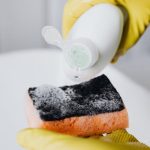Sanitizing Your RV Fresh Water Tank: Step-by-Step Guide
Sanitizing Your RV Fresh Water Tank: Step-by-Step Guide
Owning an RV can be an exhilarating experience, offering the freedom to travel and explore while having the comforts of home on wheels. However, maintaining the RV’s components, especially the fresh water tank, is crucial for ensuring safe and enjoyable trips. Proper sanitization of the RV fresh water tank is essential to prevent the growth of bacteria and ensure that the water remains safe for consumption.
Understanding the Importance of Sanitizing Your RV Fresh Water Tank
Sanitizing your RV fresh water tank is not just about maintaining cleanliness; it’s about safeguarding your health. According to the Centers for Disease Control and Prevention (CDC), contaminated water can lead to serious illnesses, including gastrointestinal infections.
Regular sanitization helps prevent the growth of harmful bacteria, algae, and mold. This process eliminates any unpleasant odors and tastes, ensuring that the water remains fresh and usable.
When Should You Sanitize Your RV Fresh Water Tank?
Ideally, you should sanitize your RV fresh water tank at least once a season, or every six months. However, there are specific instances when you should consider additional sanitization:
- After purchasing a new or used RV.
- Following a long period of storage or inactivity.
- If you notice an unpleasant odor or taste in the water.
- After any repairs or maintenance work involving the water system.
Step-by-Step Guide to Sanitizing Your RV Fresh Water Tank
Step 1: Gather Necessary Supplies
Before you start the sanitization process, gather the following supplies:
- Non-scented household bleach or a specialized RV tank sanitizer.
- A measuring cup.
- A water hose.
- Protective gloves and goggles (if using bleach).
Step 2: Drain the Fresh Water Tank
Begin by draining any remaining water from the tank. Locate the water drain valve and open it to allow the water to completely empty out. This ensures that any stagnant water is removed before you sanitize.
Step 3: Prepare the Sanitizing Solution
If using household bleach, use a ratio of 1/4 cup of bleach for every 15 gallons of water the tank holds. For example, a 60-gallon tank would require approximately 1 cup of bleach. Mix the bleach with water in a bucket before adding it to the tank.
Step 4: Add the Solution to the Tank
Using a funnel, pour the sanitizing solution into the fresh water tank. It’s crucial to ensure that the solution reaches all parts of the tank for effective cleaning.
Step 5: Fill the Tank with Water
Attach a water hose to the RV’s water inlet and fill the tank completely with clean water. This will help distribute the bleach solution throughout the tank.
Step 6: Run the Solution Through the System
Turn on the water pump and open all faucets, including those in the kitchen, bathroom, and outdoor shower. Allow the solution to run through the system until you smell bleach at each faucet. This step ensures that the entire plumbing system is sanitized.
Step 7: Let It Sit
Allow the bleach solution to sit in the tank and plumbing system for at least 12 hours. This gives the bleach enough time to disinfect the tank thoroughly.
Step 8: Drain and Rinse
After 12 hours, drain the bleach solution from the tank. Refill the tank with clean water and flush the system by running water through all faucets until the bleach smell disappears. You may need to repeat this rinsing step a few times to ensure all bleach is removed.
Additional Tips for Maintaining a Clean RV Fresh Water Tank
Maintaining the cleanliness of your water tank doesn’t end with sanitization. Here are some additional tips to keep your water fresh and safe:
- Use a water filter to remove impurities before filling the tank.
- Regularly inspect hoses and fittings for leaks or damage.
- Store your RV in a clean, covered area to prevent debris from entering the water system.
- Consider using a water conditioner to reduce mineral buildup.
Conclusion
Sanitizing your RV fresh water tank is a critical maintenance task that ensures the safety and comfort of your travels. By following this step-by-step guide, you can enjoy clean, fresh water throughout your adventures. Remember to make sanitization a regular part of your RV maintenance routine to protect both your health and your RV investment.
For more tips and detailed guides on maintaining your RV, visit our website. Happy travels!

Leave a Reply